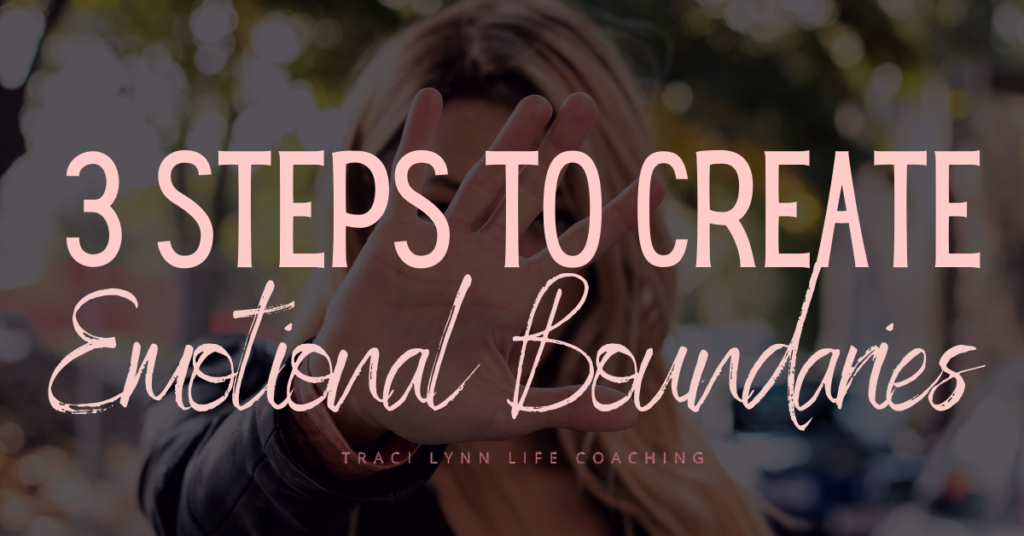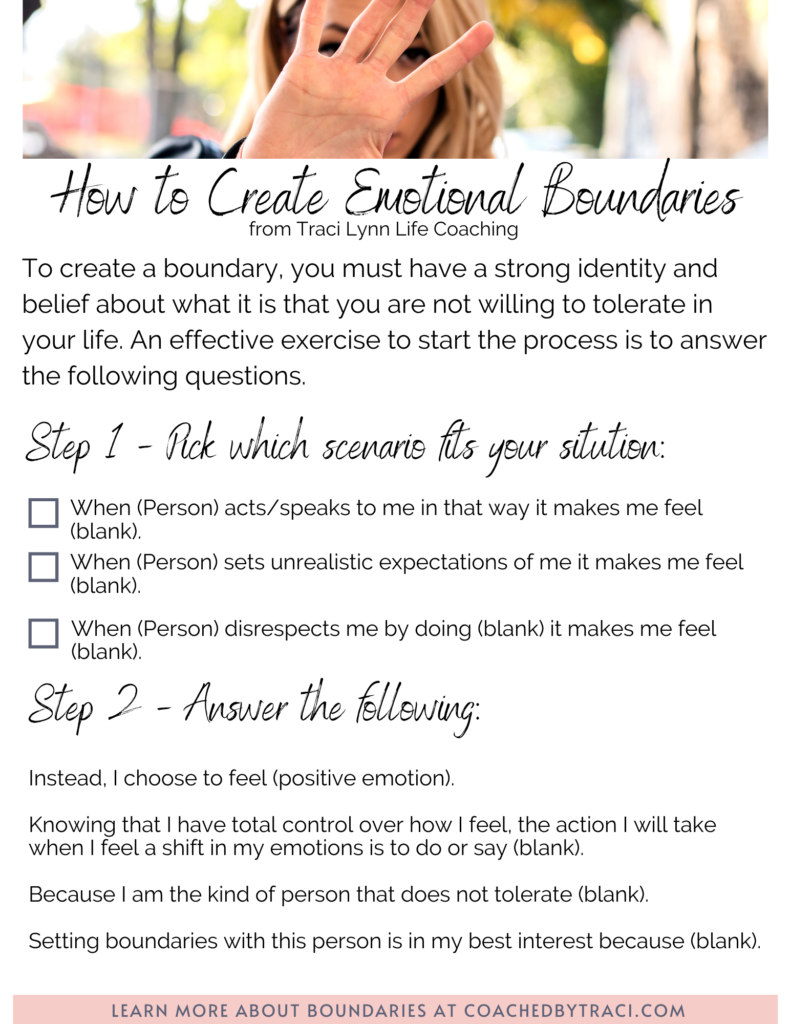
Do you have people in your life who make you feel worse about yourself, a situation, or life in general after being in their presence? People whose negative energy kills your positive vibe? What about people in your life who get their significance from having problems and use you as their emotional dumping ground?
If you have someone that hits any of those examples, I want to help you set boundaries so that you can maintain a relationship (if you want to) while also protecting and taking care of your emotional wellbeing.
A common concern I hear from people with setting boundaries is that the other person will become confrontational. But setting boundaries does not have to be a messy drama filled experience. As a matter of fact, some boundaries can be created without the other person even knowing which are called silent boundaries.
Boundaries are simply rules of engagement to teach other people what you will not tolerate in their behavior. They can be spoken boundaries where you share the rule with the other party or they can be silent boundaries you set up and live by. How you hold the boundaries is up to you.
Here are 3 Steps to Create Emotional Boundaries
Step 1 – Boundary Creation
To create a boundary, you must have a strong identity and belief about what it is that you are not willing to tolerate in your life. An effective exercise to start the process is to answer the following questions.
Choose which scenario fits your situation:
- When (Person) acts/speaks to me in that way it makes me feel (blank)
- When (Person) sets unrealistic expectations of me it makes me feel (blank)
- When (Person) disrespects me by doing (blank) it makes me feel (blank)
Then answer the following:
- Instead, I choose to feel (positive emotion)
- Knowing that I have total control over how I feel, the action I will take when I feel a shift in my emotions is to do or say (blank)
- Because I am the kind of person that does not tolerate (Blank)
- Setting boundaries with this person is in my best interest because (blank)
Here is an example from a real client:
When my mom speaks to me in that way it makes me feel angry.
Instead, I choose to feel peace and calm. Knowing that I have control over how I feel, the action I will take when I feel a shift in my emotions is to peacefully excuse myself from the conversation. I will leave the house or end the phone call. Because I am the kind of person that does not tolerate people – especially my own mother – disrespecting me in that way. Setting boundaries with this person is in my best interest because I want to be happy in my life and not miserable like my mother.
Download my free “How to Create Emotional Boundaries” worksheet here!
Step 2 – Decide if your boundary will be spoken or silent.
If you are not concerned about confrontation you may want to set a spoken boundary. It is common for the other person to become defensive, so don’t allow yourself to be surprised by this. Expect it! Also, do not try to rationalize with the other person so that they will be more understanding. It very rarely happens (it could even be why you need this boundary in the first place). Just be clear in your definition of your boundary so there are no misunderstandings. Use the format above to gain clarity and then simply tell them what you are not willing to tolerate anymore. You must be clear about what the other person can expect from you if they violate the boundary.
“If someone throws a fit because a boundary has been set, it is just more evidence that the boundary was needed” – Unknown
If you are concerned about confrontation, you can also have a silent boundary if that makes you feel more comfortable. A silent boundary is one that you set for yourself and hold yourself accountable to. Use the same format above to define the boundary.
Step 3 – Consistency or Bust
After the boundary is set you MUST be consistent in the implementation. One more time, you MUST BE CONSISTENT WITH IT. Consistency is so important because in many situations the other person starts to change their behavior for the better if the consequence is always expected.
In the example above, the client set a silent boundary with her mother. And even though it was not verbally shared with her mom, she was so consistent in implementing her boundary that eventually her mother caught on that when she said certain things to her daughter – her daughter ended the conversation. The client has noticed a considerable change in the way her mother now communicates with her due to consistency.
Consistency is even more important when it comes to the spoken boundaries. Consider it like you would if you were setting rules for children. If you set a rule for a child that they must pick up their toys before bedtime or they will not get a nighttime snack, but you do not enforce your own rule, the child will learn that rules are not always reinforced. Therefore, they will test the rule as much as possible. Consistency in the rules – with children and adults – is the way in which people learn how to treat you and how much they respect you.
Less follow through = less respect.
Here is a note of permission if you need it from your life coach; do not be afraid to remove people from your life completely if they do not serve as a positive influence. Ultimately, we become who we surround ourselves with and happiness/mental well being is hinged by the things that we tolerate.
What are you tolerating? Who are you tolerating? How can you benefit from setting boundaries?
Your Life Coach – Traci
“Daring to set boundaries is about the courage to love ourselves even when we risk disappointing others” Brene Brown
